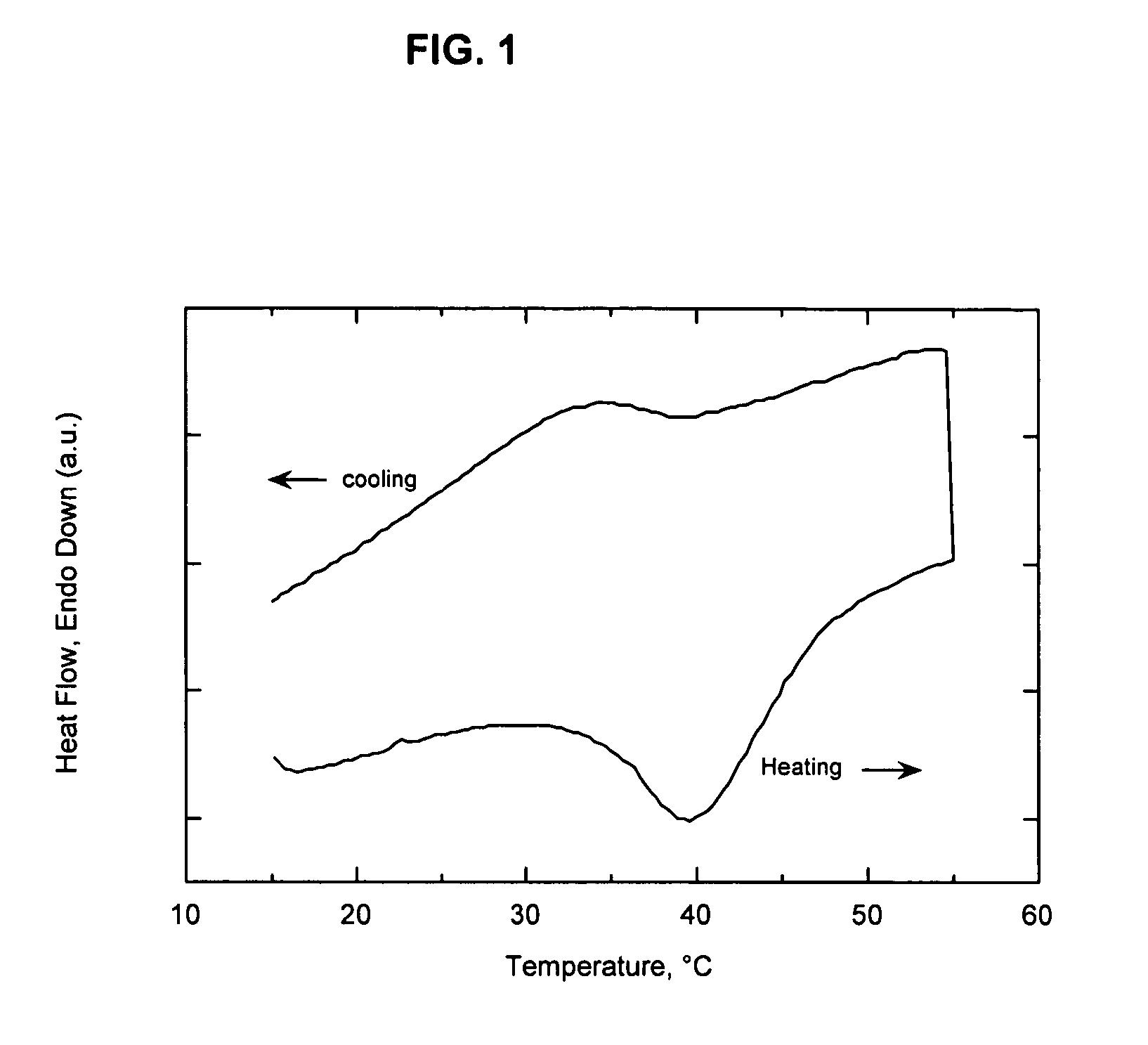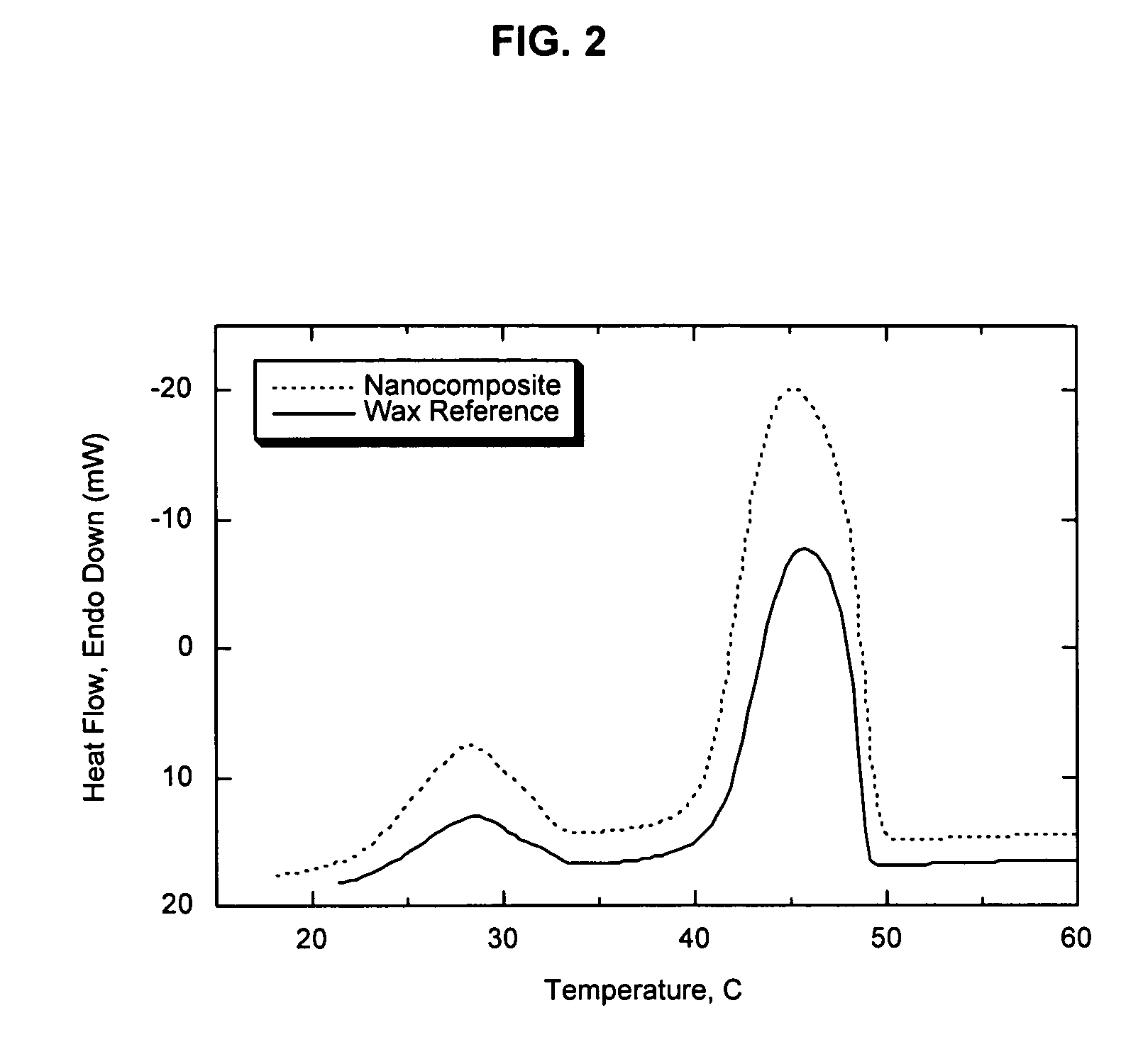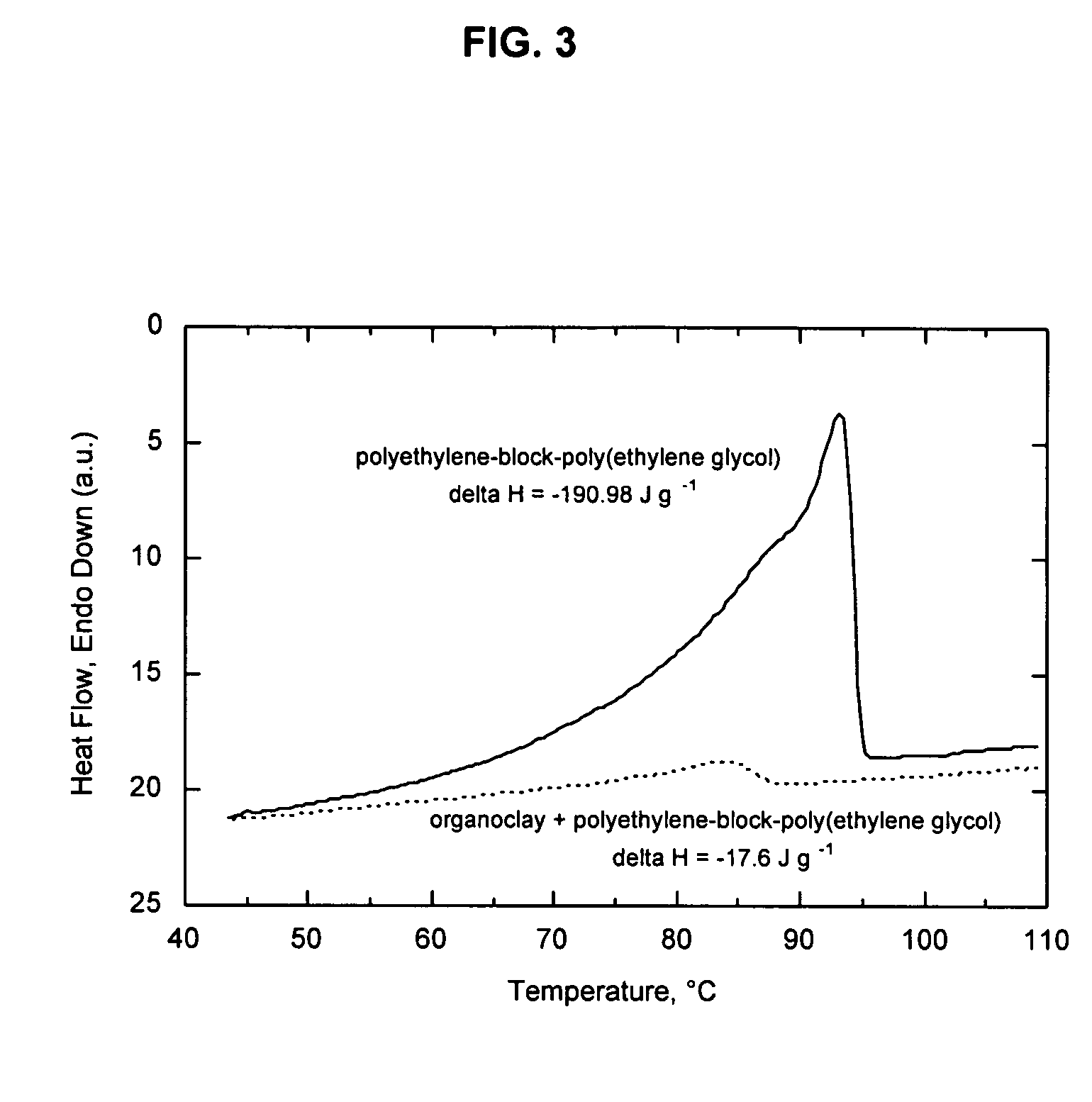Polyolefin nanocomposites
a polymer spherulite and nano-compositive technology, applied in the field of polymer spherulites, can solve the problems of little or no improvement of the barrier properties of the mix, partial or substantial phase separation, etc., and achieve the effect of reducing the size, preventing or reducing the growth of polymer spherulites
- Summary
- Abstract
- Description
- Claims
- Application Information
AI Technical Summary
Benefits of technology
Problems solved by technology
Method used
Image
Examples
example 1
[0059]This example illustrates the superior barrier performance that can be achieved when the melt / freeze transitions of the organoclay and a paraffin wax are sufficiently matched to generate a new nanocomposite phase. An organophilic clay was prepared from a commercially available, water-washed montmorillonite (Cloisite Na® which is a product of Southern Clay Products). The clay was dispersed in 40° C. tap water at a solids concentration of 2.5 weight percent by high-shear mixing for 40 minutes. The edge of the clay was modified by addition of an aqueous solution of the ammonium salt of 1-hydroxydodecane-1,1-diphosphonic acid. The amount of ammonium alkyldiphosphonate added was 3 weight percent relative to the weight of the dry clay. Following equilibration for 30 minutes, the temperature of the slurry was increased to 70° C. and an amount of dimethyl dihydrogenated tallow ammonium chloride (Arquad 2HT-75, a quaternary amine salt commercially available from Akzo Nobel) equivalent t...
example 2
[0066]In this example, the effect of using a paraffinic wax with increased melt / freeze temperature on nanocomposite performance is illustrated. The organoclay of Example 1 was dispersed in Paraflint H-I (a product of Moore & Munger). This is a high melting wax that is miscible with low density polyethylene (LDPE) at low wax / polymer ratios. The melt and freeze transitions of the wax are almost identical with that of LDPE. The nanocomposite was prepared with 10 weight percent organoclay loading and the oxygen permeability of the pure wax and the nanocomposite were measured. The permeability of the reference wax was 3404×10−17 mol O2 / m·s·Pa, while that of the nanocomposite was 2393×10–17 mol O2 / m·s·Pa. In this case the oxygen permeability was reduced only 30 percent relative to the pure wax. This is in contrast to the paraffin wax nanocomposite of Example 1 which demonstrated a 98.4 percent reduction in oxygen permeability at 10 weight percent organoclay loading. This example illustrat...
example 3
[0067]While maintaining the organoclay in an exfoliated state is important to nanocomposite performance, it may not be the only determining factor affecting barrier performance. Without wishing to be limited to any specific theory, it is believed that the inability of an isotropic polymer phase to wet and bond with an anisotropic organoclay surface is also a contributing factor responsible for the poor barrier performance observed in polyolefin systems, and in polymer systems in general. In other words, while it may be relatively easy for a paraffin molecule to suffer the loss in entropy necessary to adopt a favorable orientation to interact with the organoclay surface, it is unlikely that the significantly greater loss in entropy accompanying the uncoiling of a high-molecular-weight polymer could be compensated sufficiently by changes in enthalpy. This hypothesis is supported by the data in Table 2, which show the effects of freezing points and molecular weight on oxygen barrier. A...
PUM
| Property | Measurement | Unit |
|---|---|---|
| aspect ratios | aaaaa | aaaaa |
| weight percent | aaaaa | aaaaa |
| temperature | aaaaa | aaaaa |
Abstract
Description
Claims
Application Information
 Login to View More
Login to View More - R&D
- Intellectual Property
- Life Sciences
- Materials
- Tech Scout
- Unparalleled Data Quality
- Higher Quality Content
- 60% Fewer Hallucinations
Browse by: Latest US Patents, China's latest patents, Technical Efficacy Thesaurus, Application Domain, Technology Topic, Popular Technical Reports.
© 2025 PatSnap. All rights reserved.Legal|Privacy policy|Modern Slavery Act Transparency Statement|Sitemap|About US| Contact US: help@patsnap.com



